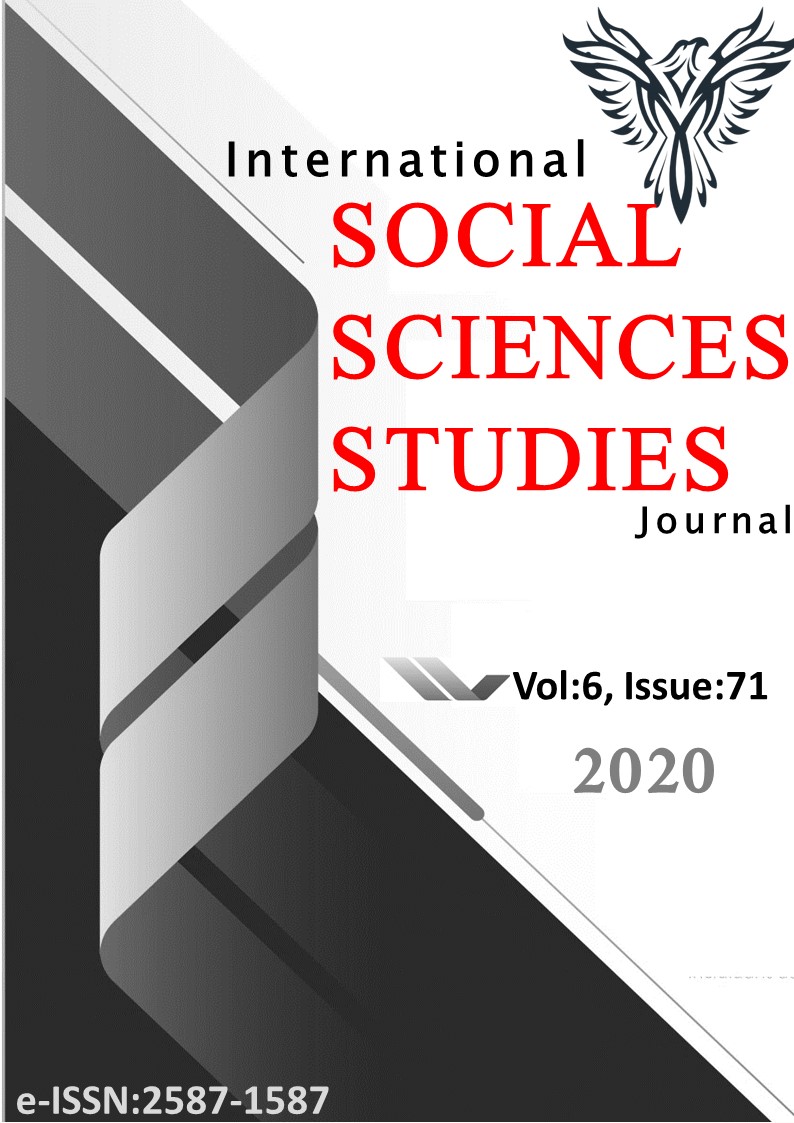İŞ GÖRENLERİN İNOVASYON YETENEĞİNİN DEMOGRAFİK FAKTÖRLER AÇISINDAN İNCELENMESİ: ADANA İLİ İMALAT SANAYİİ ÖRNEĞİ
Author :
Abstract
Bu çalışmanın amacı iş görenlerin (cinsiyet, medeni durum, çalışma süresi) demografik faktörlerinin inovasyon yetenekleri farklılıklarını tespit etmektir. Çalışmada veri toplamak amacıyla Vila ve Kuster (2007) tarafından geliştirilen ‘İnovasyon Yeteneği Ölçeği’ kullanılmıştır. Veriler, firmalarında çalışanlardan toplanmıştır. Araştırmanının evrenini Adana ilinde faaliyet gösteren ve Ar-Ge bölümü bulunan 1150 imalat firması oluşturmaktadır. Çalışmanın niteliği göz önüne alınarak, örneklem sayısı %95 güvenirlik ve %5,5 duyarlılık ile tespit edilmiştir. Bu durumda gerekli örneklem sayısının yaklaşık 257 olduğu tespit edilmiştir. Çalışma kapsamında verilerin analiz edilmesinde IBM SPSS Statistics 20,00 paket programı kullanılarak analiz edilmiştir. Ölçekler ile Demografik değişkenler arasındaki ilişkilerin belirlenebilmesi için verilerin analizinde T testi ve tek yönlü Varyans analizi (ANOVA) uygulanmıştır. Araştırma sonucunda kadın veya erkek çalışanların inovasyon yeteneği algıları yaklaşık olarak birbirine benzer düzeylerde ortaya çıkmıştır. Diğer yandan inovasyon yeteneği ile alt boyutlarının medeni duruma göre istatiksel olarak anlamlı bir farklılık görülmemiştir. Yapılan ANOVA testine göre ise inovasyon yeteneği ve alt boyutlarının çalışma süresi değişkeni bakımından incelenmesi sonucunda istatistiksel olarak anlamlı fark bulunamamıştır.
Keywords
Abstract
The aim of this study is to determine the differences in innovation abilities of the demographic factors of the employees (gender, marital status, working time).. The "Innovation Ability Scale" developed by Vila and Kuster (2007) was used to collect data in the study. Data were collected from employees working in their companies. The universe of his research consists of 1150 manufacturing companies operating in Adana and having an R&D department. Considering the nature of the study, the sample size was determined with 95% reliability and 5.5% sensitivity. In this case, the required sample size was determined to be approximately 257. Within the scope of the study, the data were analyzed using IBM SPSS Statistics 20,00 package program. T test and one-way analysis of variance (ANOVA) were used in the analysis of data in order to determine the relationships between the scales and demographic variables. As a result of the research, the innovation ability perceptions of male or female employees emerged at approximately similar levels. On the other hand, no statistically significant difference was found between the innovation ability and the sub-dimensions according to marital status. According to the ANOVA test, no statistically significant difference was found as a result of the examination of innovation ability and sub-dimensions in terms of working time variable
Keywords
- Koç, M., Ballı, E. & Yaman Kahyaoğlu, D. (2020). “İş Görenlerin İnovasyon Yeteneğinin Demografik Faktörler Açısından
- pp:4300-4309. İŞ GÖRENLERİN İNOVASYON YETENEĞİNİN DEMOGRAFİK FAKTÖRLER AÇISINDAN İNCELENMESİ: ADANA İLİ İMALAT SANAYİİ ÖRNEĞİ An Investigation Of The Innovation Ability Of Employees In Terms Of Demographic Factors: A Case Of Manufacturing Industry In Adana Province Doç. Dr. Murat KOÇ Çağ Üniversitesi, Fen Edebiyat Fakültesi, Mersin/Türkiye. ORCID ID: https://orcid.org/0000-000238483111 Dr. Öğr. Üyesi. Erdinç BALLI Çukurova Üniversitesi, Karataş Turizm İşletmeciliği ve Otelcilik Yüksekokulu, Adana/Türkiye. ORCID ID: https://orcid.org/0000-0001-5111-1868 Dr. Diler YAMAN KAHYAOĞLU Toros Üniversitesi, Meslek Yüksek Okulu, Lojistik Bölümü, Mersin/Türkiye. ORCID ID: https://orcid.org/0000-0002-8539-0700 ÖZET Bu çalışmanın amacı iş görenlerin (cinsiyet, medeni durum, çalışma süresi) demografik faktörlerinin inovasyon yetenekleri farklılıklarını tespit etmektir. Çalışmada veri toplamak amacıyla Vila ve Kuster (2007) tarafından geliştirilen ‘İnovasyon Yeteneği Ölçeği’ kullanılmıştır. Veriler, firmalarında çalışanlardan toplanmıştır. Araştırmanının evrenini Adana ilinde faaliyet gösteren ve ArGe bölümü bulunan 1150 imalat firması oluşturmaktadır. Çalışmanın niteliği göz önüne alınarak, örneklem sayısı %95 güvenirlik ve %5,5 duyarlılık ile tespit edilmiştir. Bu durumda gerekli örneklem sayısının yaklaşık 257 olduğu tespit edilmiştir. Çalışma kapsamında verilerin analiz edilmesinde IBM SPSS Statistics 20,00 paket programı kullanılarak analiz edilmiştir. Ölçekler ile Demografik değişkenler arasındaki ilişkilerin belirlenebilmesi için verilerin analizinde T testi ve tek yönlü Varyans analizi (ANOVA) uygulanmıştır. Araştırma sonucunda kadın veya erkek çalışanların inovasyon yeteneği algıları yaklaşık olarak birbirine benzer düzeylerde ortaya çıkmıştır. Diğer yandan inovasyon yeteneği ile alt boyutlarının medeni duruma göre istatiksel olarak anlamlı bir farklılık görülmemiştir. Yapılan ANOVA testine göre ise inovasyon yeteneği ve alt boyutlarının çalışma süresi değişkeni bakımından incelenmesi sonucunda istatistiksel olarak anlamlı fark bulunamamıştır. Anahtar kelimeler: İnovasyon Yeteneği, İmalat Sanayii
